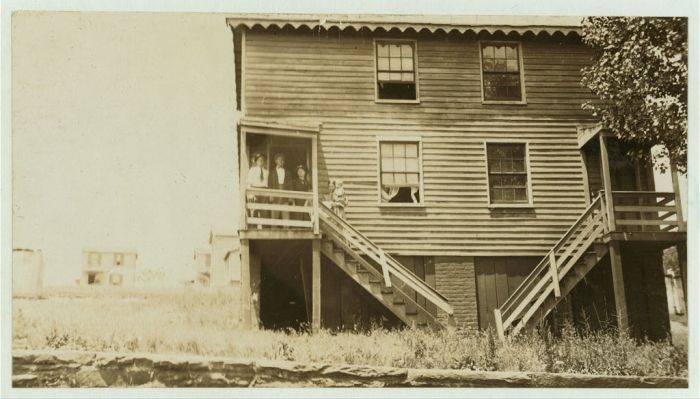A couple of weeks ago, husband John and I went to Lynchburg’s Old City Cemetery to look at the roses in bloom and the old gravestones. While there, we found the final resting place of William Harrison Brooks.

Actually, it was John who first noticed Brooks’ tombstone and the death date — November 11, 1918. The stone also said Brooks died near the Meuse River in France.
As I was photographing some roses nearby, John called over, “Hey, he died on the last day of the war.”
Sure enough, Brooks died on the last day of the Great War, the day the armistice was signed, and the date now celebrated as Veteran’s Day. He died during the Meuse-Argonne Offensive, also known as the Battle of Argonne Forest.
We later found Brooks’ name on Monument Terrace, the Lynchburg veterans memorial. It’s a long flight of steps that runs between Court and Church streets and has monuments to the Civil War, both World Wars, the Korean Conflict and the Vietnam War.
At the top of Monument Terrace, across Court Street from the Lynchburg Museum, is a statue of a Confederate soldier. At the bottom is what most people in town call “The Doughboy.” It’s a bronze statue of a World War I soldier and its official name is “The Listening Post.”
The names of the World War I dead from Lynchburg are listed to the right and left of The Doughboy.

Being a curious person, I wondered what more there was to learn about William Harrison Brooks. While I didn’t get all crazy and track down living relatives — but if you are a relative and see this, please contact me — I did find out a few things:
According to his WWI registration card, dated June 5, 1918, Brooks was 21 years old and born in 1897. He was white, with brown eyes and “reddish brown” hair, and he wasn’t bald. I don’t know why the Army cared about that, but apparently they did.
According to the 1910 U.S. Census, Brooks worked as a spinner at the Lynchburg Cotton Mill. He lived on Arthur Street, in a neighborhood known as “Cotton Hill.” The census has Brooks living with parents Henry and Clara, older brother Robert and a younger sister. The sister’s name is difficult to decipher, but looks like Iva or Eva. Henry was a carpenter and Robert worked as a carder at the cotton mill.

Thanks to the nice folks at the Lynchburg Museum System, I found out that Arthur Street no longer exists. Like a lot of Cotton Hill, the street disappeared when U.S. 29 Business was built and the Spring Hill Cemetery was expanded. But in 1918, Arthur Street was just two blocks from the cotton mill.

The cotton mill closed in 1957 and was demolished in the 1980s, but at least one building associated with it remains: Melrose Hall.
According to the Facebook page “A Visual History of Lynchburg, Virginia,” Melrose Hall was built in 1906 as a social hall for cotton mill employees. Today, it’s owned by Liberty University and used for “Scaremare,” the college’s annual haunted house.
But back to Brooks.
A muster roll for what it calls “the War with Germany,” found at the Lynchburg Circuit Court Clerk’s office, says Brooks “selected service” on August 7, 1918. He joined the Army and served in the 330th Infantry. A little more than three months later, he was dead, killed in action in France.
On his tombstone is written, “Nobly he fell while fighting for Liberty.”
Here are a couple more cotton-mill-related photos you might find interesting:


Very interesting! I really would like to go back in time to see what Lynchburg looked like long ago.
LikeLike
Thanks! There are always good photos on Living in Lynchburg and Visual History of Lynchburg on FB, along with the museum’s website.
LikeLike
The 100th anniversary of WWI will be observed nationwide in 2017. The Lynchburg Musuem will be mounting a major exhibit.
LikeLike
I’d heard a little about that. Hopefully, people will come out of the woodwork with all kinds of information and photos.
LikeLike
I could have read on, this town has a lot of stories to tell. if you look at the building scare mare is in,it doesn’t look anything like it did, would be great to have some of these areas renovated, thank you for sharing
LikeLike
William Brooks was my great Uncle. I have two uncles still living in Lynchburg. My Grandfather (now deceased), Robert, had a photo of him in his doughboy uniform. I will check to see if they know what happened to his photo.. The sister was named Ida, she died shortly thereafter during a flu epidemic. Both of his parents are buried in SpringHill Cemetary, however for some reason her stone calls her Callie.
LikeLike
I saw photos of both William and Ida in the office at Old City Cemetery. He was dressed in the doughboy uniform in the photo. It could be the same one! Thanks for reading!
LikeLike
On November 12, 2017, The Lynchburg Chapter, Daughters of the American Revolution, sponsored a ceremony to rededicate a restored WWI Monument in front of E.C. Glass High School on Memorial Avenue in Lynchburg. Private Brooks is among the names on that monument, which was first erected by Lynchburg Chapter in 1936.
LikeLike